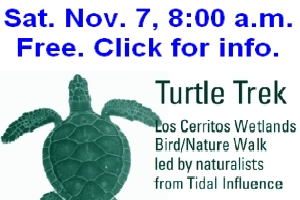It is not economically or ecologically efficient to attempt to remove all coyotes from the urban ecosystem. Attempts made by local, state and federal agencies, as well as private organizations, over the past century to eradicate coyotes have proven to be ineffective, as coyotes have expanded their territories across the United States. As a last resort, lethal control measures, when employed, can be controversial and non-selective; therefore, if they are used, they must be humane and in compliance with federal and state laws...
How Many Coyotes Are There in Long Beach?
It is difficult to ascertain how many coyotes there are in a particular area without tracking and updating reports on a real-time basis; however, what is known is that coyotes can become habituated if they are intentionally or unintentionally fed by humans, which can lead to bolder behavior, especially when coyotes lose their fear of people.
In general, urban coyotes regularly roam an area of about two (2) to five (5) square miles or whatever distance it takes to get enough food for the pack members. Normally, each pack is a territorial family group that varies in number from two (2) to ten (10), and a portion of the area the pack inhabits is the pack’s territory, which they defend from other coyotes. The number of mature coyotes in the pack is linked to the amount of food resources in the territory.
A coyote pack usually has one (1) breeding (or alpha) female who produces more pups than are ultimately desired. Young coyotes may leave the pack at about nine (9) to eleven (11) months of age, but dispersal patterns are highly variable, and as a result, these coyotes become transients. Other types of transients include older coyotes who leave the pack when they can no longer defend their role as upper level pack members.
Transient coyotes migrate all over in narrow, undefended zones that exist between pack territories and search for an open habitat to occupy. It is largely because of these transients that coyote eradication programs are often unsuccessful. Ultimately, removing a group of territorial coyotes will create an undefended area into which transient coyotes will flow. At all times of the year, numbers of transient coyotes are immediately available to replenish any voids created by killing the resident coyotes. Further, if either the alpha male or alpha female in a pack is killed, the resulting effect may be ovulation in other breeding-age females in the pack, and an increase in the number of litters as well as the number of pups per litter.
Hazing and Behavioral Change
Some urban coyotes have become too comfortable in close proximity to people, and to safely coexist it’s important to modify this behavior and attitude in resident coyote populations. Habituated coyote behavior needs to be reshaped to encourage coyotes to avoid contact with humans and pets. Behavioral change also involves human activities, such as identifying and removing attractants and responsibly protecting pets (See Appendix C: Hazing Program and Training Plan).
Hazing, also known as "fear conditioning", is the process that facilitates this change and is by necessity a community response to negative encounters with coyotes. The more often an individual animal (coyote) is hazed, the more effective hazing is in changing that animal’s (coyote’s) behavior. Hazing requires community involvement, understanding, and support; and residents are best equipped to respond consistently and at the most opportune times in their own neighborhoods, parks and open spaces.
Hazing employs immediate use of deterrents - such as loud noises, spraying water, bright lights, throwing objects, shouting, etc. - to move an animal out of an area or discourage undesirable behavior or activity. Hazing can help maintain a coyote’s fear of humans and discourage the animal from entering neighborhoods along with backyards and play areas. It is important to note that hazing does not harm or damage animals, humans or property when implemented correctly.
Reaction is pending. Further as newsworthy.
















